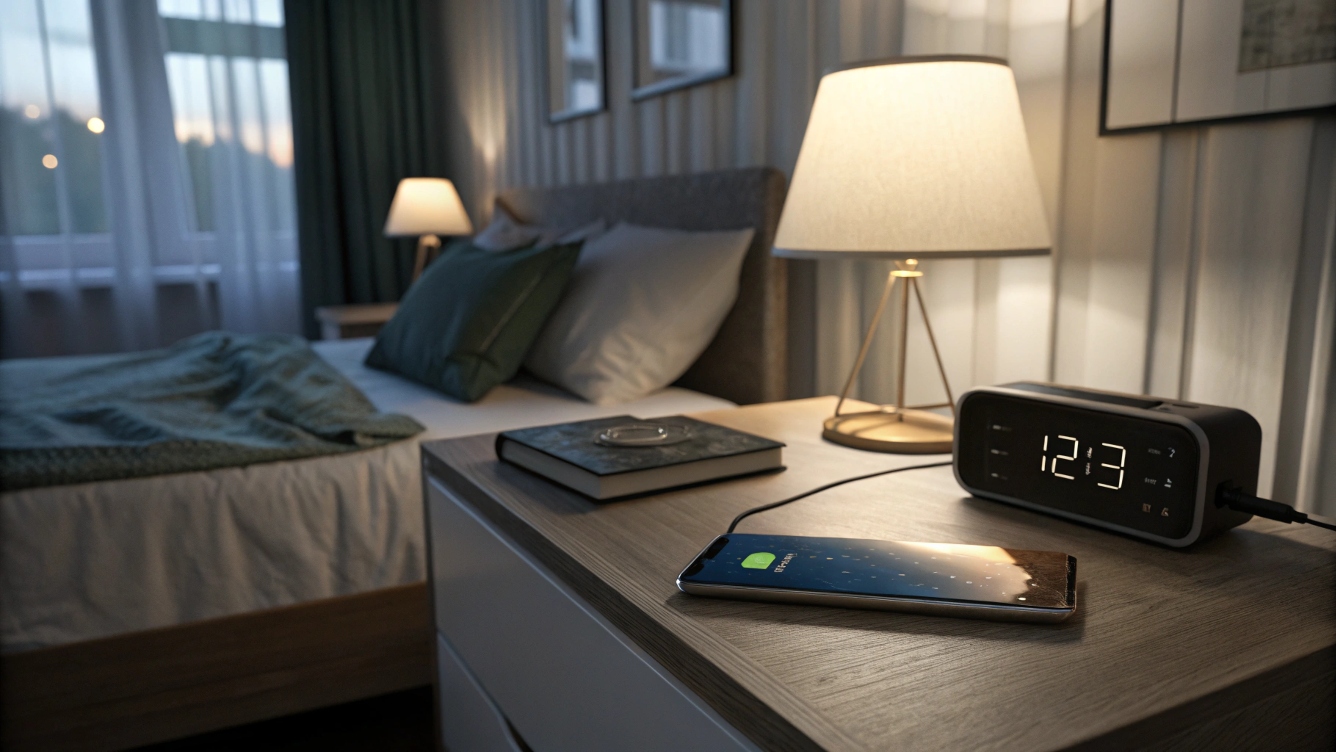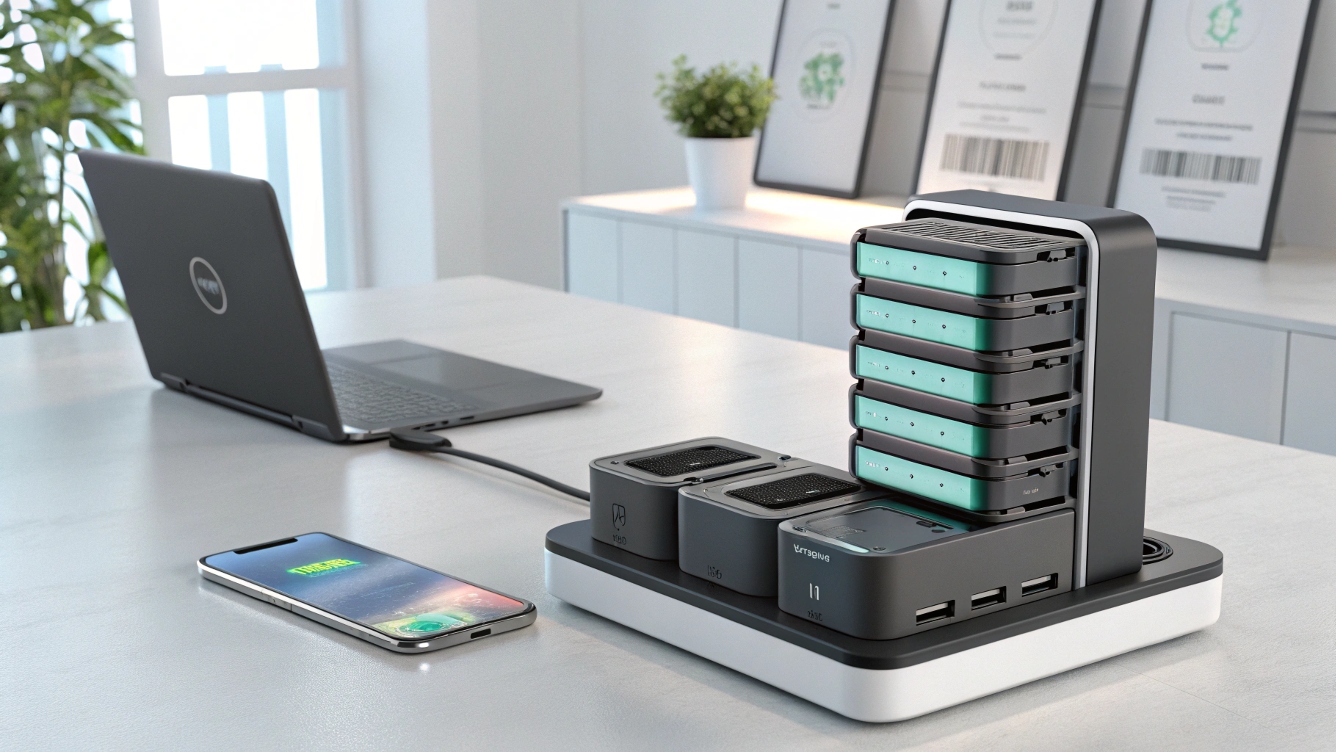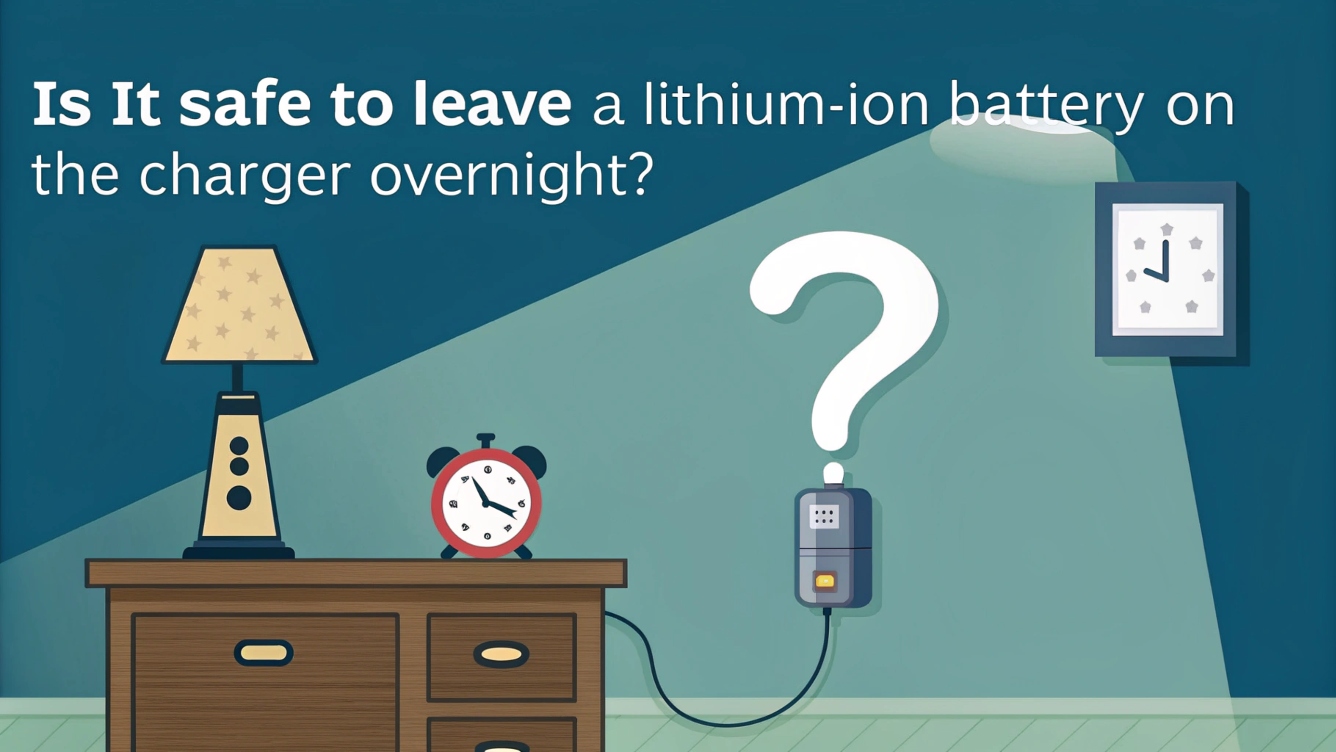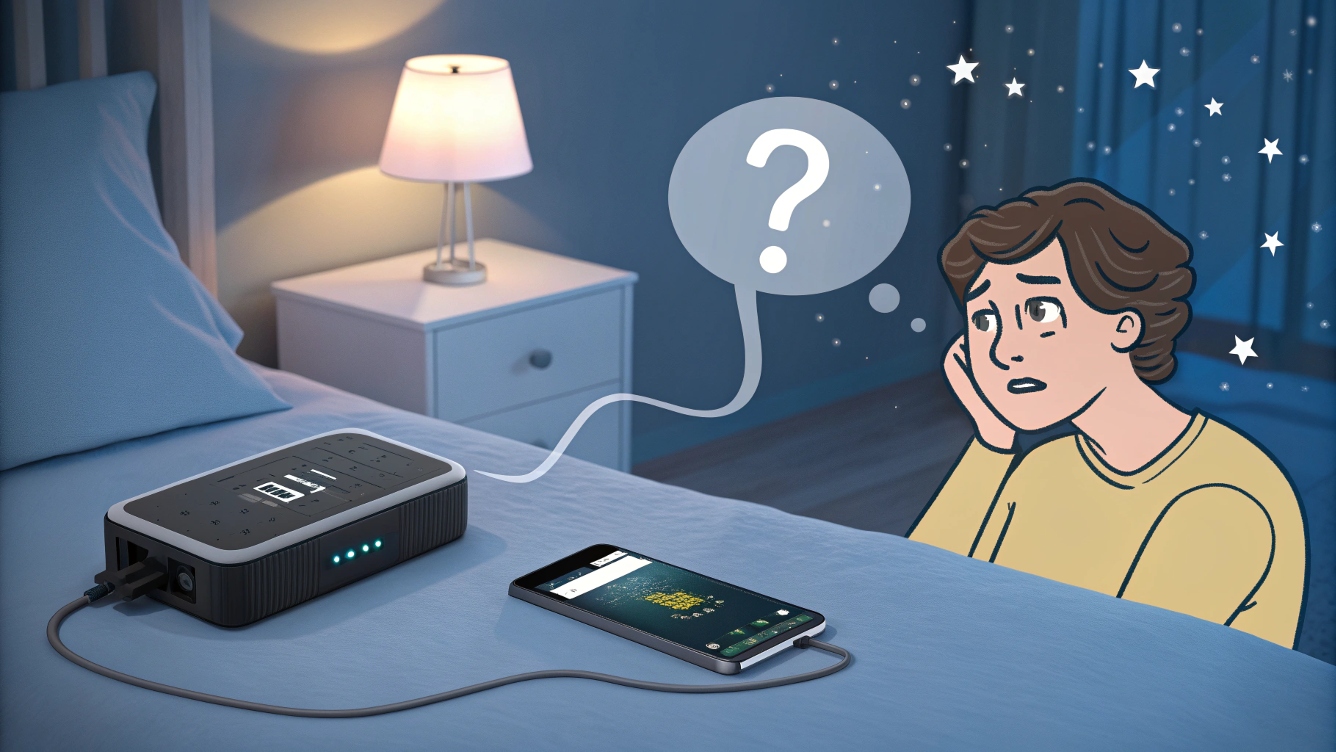¿Es seguro dejar una batería de iones de litio en el cargador durante la noche??
Los riesgos ocultos de la carga nocturna
Dejar las baterías de iones de litio en el cargador durante la noche puede parecer conveniente, pero puede acelerar el desgaste y plantear riesgos de seguridad.. He aquí por qué:
- Estrés por sobrecarga: Los cargadores modernos normalmente dejan de cargar en 100%, pero la carga lenta para mantener la capacidad total genera calor, degradar la batería con el tiempo. Los estudios muestran que las cargas completas frecuentes reducen la vida útil en 20-30% en comparación con la carga parcial:citar[2]:citar[3].
- Fugitivo térmico: La carga prolongada en áreas mal ventiladas aumenta el riesgo de incendio, especialmente con baterías dañadas o falsificadas. Por ejemplo, un hinchado 18650 La celda que se deja cargando durante la noche puede alcanzar temperaturas superiores a 150 °C.:citar[1]:citar[4].
- Pérdida de capacidad: Células de iones de litio almacenadas en 100% la carga pierde ~5% de capacidad mensual, versus 2% en 50% cargar.
Para la punta: Usar baterías de litio apilables (como nuestra Serie Modular Energy con sistemas de gestión de baterías integrados (BMS) para evitar la sobrecarga automáticamente.
Cuando la carga nocturna es (y no es) Aceptable
Escenarios seguros
- Cargadores inteligentes: Dispositivos con apagado automático (p.ej., iPhones, vehículos tesla) puede permanecer enchufado de forma segura.
- Dispositivos de bajo consumo: Relojes o audífonos con pilas pequeñas (<100mah) generar calor mínimo.
Situaciones de alto riesgo
- Cargadores baratos: Los cargadores no certificados carecen de regulación de voltaje, arriesgándose a cobrar de más.
- Baterías dañadas: Las células inflamadas o perforadas nunca deben cargarse sin supervisión.:citar[1].
- Paquetes de baterías de bricolaje: Células desprotegidas (como 18650s sueltos) son propensos a la fuga térmica:citar[4].
5 Estrategias para cargar de forma segura y prolongar la vida útil de la batería
1. Carga parcial (20-80% Regla)
Mantener un 20-80% el rango de carga reduce el estrés químico. Por 10kWh sistema de batería apilable, esto significa:
- Uso diario: Cargar a 80% (8KWH utilizable).
- Modo de copia de seguridad: Cargar a 100% sólo antes de tormentas o apagones.
2. Utilice tecnología de carga inteligente
Emparejar baterías con Cargadores solares MPPT (p.ej. MPPT solar GYCX) pro eso:
- Dejar de cargar en niveles preestablecidos (p.ej. 80%).
- Ajustar las tarifas según la temperatura..
3. Control de temperatura
- Rango ideal: Cargar a 15°C–25°C (59°F–77°F).
- Evite los extremos: La carga por debajo de 0 °C provoca el recubrimiento de litio; por encima de 45°C se acelera la degradación:citar[2].
4. Sistemas de batería modular
Baterías de litio apilables permitir:
- Distribución de carga entre módulos para reducir la tensión individual..
- Aislar unidades defectuosas sin tiempo de inactividad del sistema.
5. Carga programada
Configure los temporizadores para que se carguen durante las horas más frescas de la tarde y se detengan en 80% por la mañana.
Caso de estudio: Casas solares con Baterías de litio apilables

Una familia de Texas usando nuestro Kit solar fuera de la red logrado:
- 40% Vida más larga: Al limitar los cargos a 85% mediante inversores programables.
- Seguridad contra incendios: Almacenamiento de módulos en espacios ventilados., cerramientos ignífugos.
- Ahorro de energía: Agregar capacidad de manera incremental a medida que crecieron las necesidades.
Análisis comparativo: Prácticas de carga
| Práctica | Nivel de riesgo | Impacto en la vida útil | Mejor para |
|---|---|---|---|
| Durante la noche (Elegante) | Bajo | -10% | Dispositivos certificados |
| Durante la noche (Genérico) | Alto | -30% | Evitar |
| Parcial (20-80%) | Ninguno | +25% | Uso diario |
| Descarga completa | Crítico | -50% | Nunca recomendado |
Datos sintetizados a partir de pruebas de la industria y Wikipedia.: Envejecimiento de la batería de iones de litio.
Preparación para el futuro con Almacenamiento de energía modular
Actualizando a baterías de litio apilables oferta:
- Escalabilidad: Comience con 5kWh, ampliar a 20 kWh a medida que crezcan las necesidades.
- Seguridad: BMS integrado monitorea cada módulo para detectar sobrecalentamiento o sobrecarga.
- Eficiencia: Equilibre la carga entre módulos para minimizar el desgaste.
Para la punta: Combínelo con administradores de energía impulsados por IA para predecir patrones de uso y optimizar los horarios de carga..
Preguntas frecuentes: Respondiendo a inquietudes críticas
q: ¿Puedo dejar mi computadora portátil conectada? 24/7?
A: Sí, si tiene un "ahorro de batería" modo que limita la carga en 80-90%.
q: ¿Qué pasa si necesito? 100% cargo por viaje?
A: Cargue al máximo justo antes de la salida: los cargos completos ocasionales causan un daño mínimo.
q: ¿Cómo monitoreo la salud de la batería??
A: Utilice Bluetooth habilitado monitores de batería (incluido en nuestro Serie profesional) para rastrear voltaje y ciclos.
Conclusión: Carga más inteligente, Ya no

Aunque la carga ocasional durante la noche no destruirá la batería, convertirlo en un hábito acorta la vida útil y aumenta los riesgos. Para usuarios de energía solar y entusiastas de la tecnología, baterías de litio apilables combinado con tecnología de carga inteligente ofrece una forma más segura, solución más duradera.
Siguientes pasos:
- Explorar nuestro Kits de batería modular para almacenamiento escalable.
- Descargue nuestra Guía de seguridad de carga para obtener consejos de bricolaje.
- Vea una demostración sobre cómo optimizar los ciclos de carga.
Referencias
- Mecanismos de envejecimiento de iones de litio: Wikipedia: Batería de iones de litio.
- Riesgos de descontrol térmico: Wikipedia: Incendio de batería de litio.
- Datos del ciclo de carga: Informes de la industria de Battery University.



